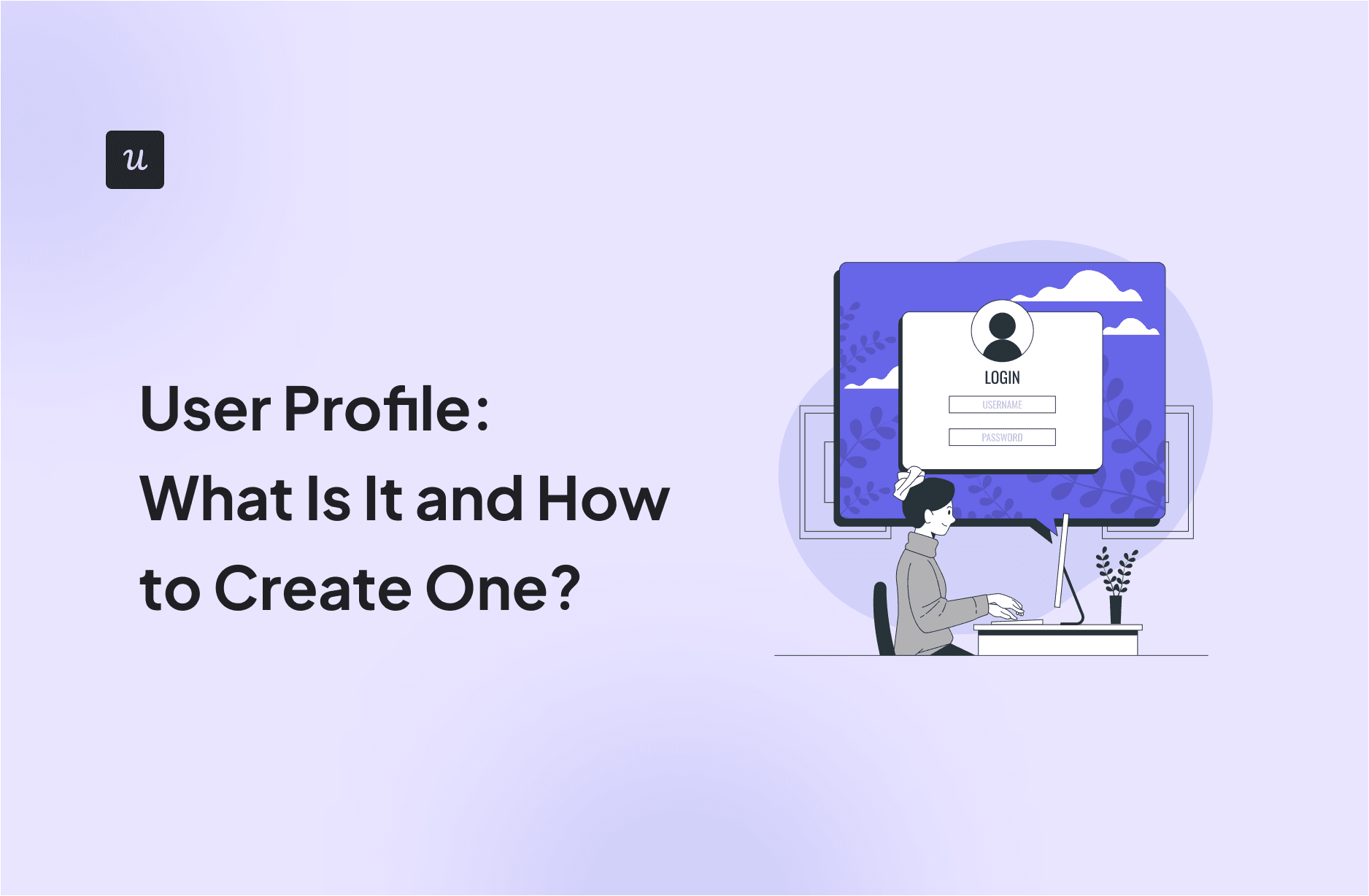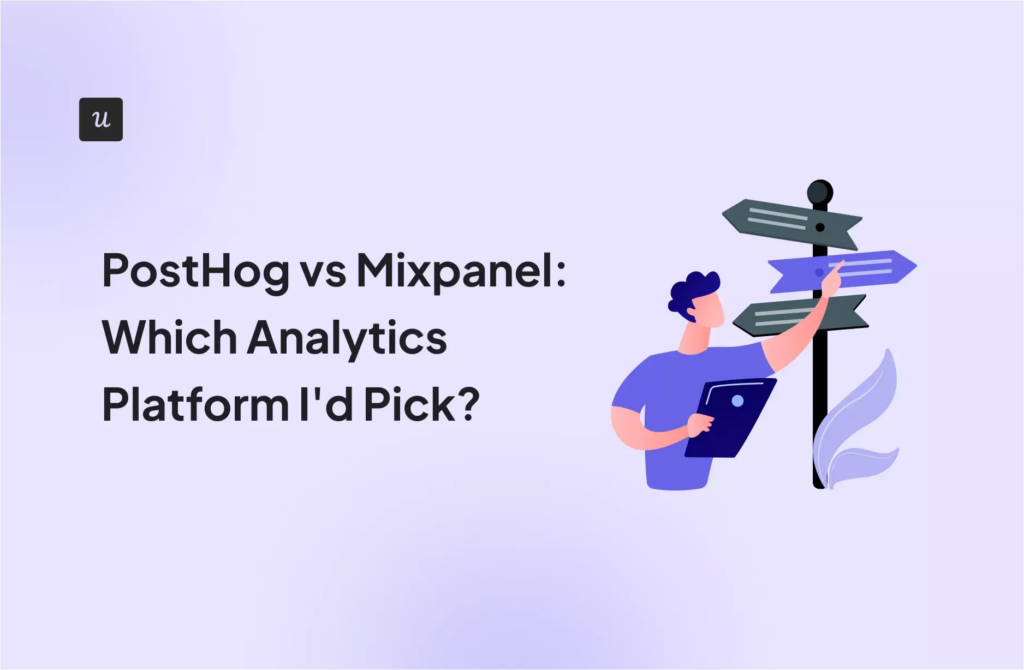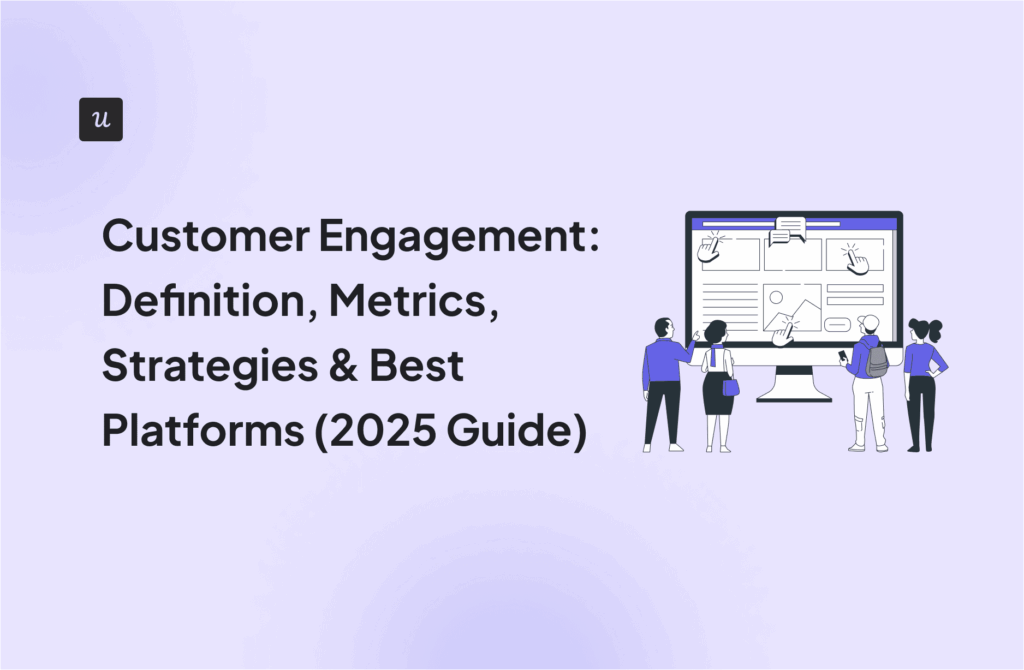
If you use social networking platforms (and who doesn’t), you already know what a user profile is.
This article focuses on user profiles in the SaaS context. You will learn what it is, how it differs from a user persona, what data it may contain, and how to create it for your product using a product analytics tool.
Let’s dive right in.
Try Userpilot Now
See Why 1,000+ Teams Choose Userpilot

What is a user profile?
A user profile is a collection of data and settings linked to an individual product user.
The profile is used to manage their identity, roles, and access rights. It also includes personal details and user behavior data.
User profile vs. user persona
A user persona is a semi-fictional character representing a typical product user. This information comes from market and customer research, and is used for strategic planning and product design.
In contrast, a user profile includes actual information about a specific user. It’s data-driven and evolves as the user interacts with the product.
The confusion between the two comes from the fact that companies use segmented user profiles. They look like user persona descriptions.

What is the purpose of user profiling?
The purpose of user profiling in the SaaS context is to collect and analyze data on users to understand their behaviors, preferences, and needs.
The process enables companies to deliver better-aligned content and services and streamline product development to better meet user expectations.
What are the benefits of creating user profiles?
Creating user profiles offers several benefits.
First, user profiles serve as the foundation for personalization. Based on detailed customer information, you can tailor user experiences, content, or recommendations to individual preferences and behaviors.
For example, you can personalize the onboarding process so that users realize value and achieve their objectives in less time.
Personalization can greatly improve user experience. Which translates into higher customer satisfaction, retention, and loyalty.
It doesn’t stop there.
Thanks to user profiling, you can target your marketing efforts effectively. This reduces customer acquisition costs and increases their lifetime value (through upsells and cross-sells).
User profiles improve decision-making. By analyzing aggregated user data, you can extract valuable insights for business strategy, product development, and customer service improvements.
What customer data is included in user profiles?
A user profile normally contains a few main types of user data. Here are 6 of them.
Demographic information
This includes basic details about the user. Like their age, gender, location, education level, and income.
Such information helps businesses understand the background of their users and tailor services to meet the needs of different demographic groups.
For example, you can use the data about user location or language to localize their product experience, making it more inclusive and driving growth in different markets.
Product usage data
Product usage data captures how users interact with the products or services. It includes information about the frequency of use, used features, completed events, and duration of use.
Analyzing product usage data helps companies improve product design and user experience based on actual user behavior.
Imagine that a user doesn’t activate a specific feature relevant to their use case. Based on that information, you can trigger onboarding flows that help them adopt the feature.

Psychographic data
Psychographic information is the user’s attitudes, interests, personality traits, values, and lifestyles.
Insights from psychographic data can guide the development of new or existing products to better align with the values and lifestyles of target customers.
Like a fitness tracking app adding a social sharing feature when it recognizes that its users are motivated by a sense of community and social accountability.
You can use the data to create more effective marketing messages and campaigns. That resonate with the audience on a deeper more personal level.
Customer sentiment data
Sentiment data reveals how customers feel about a product, service, or brand.
This data is crucial for measuring customer satisfaction and targeting support and engagement efforts.
For example, you could provide additional in-app guidance to your NPS detractors (1-6) to increase their chances of success. Your promoters, on the other hand, could be targeted with messages encouraging them to review the product on sites like G2 or take part in referral programs.

Technographic data
Technographic data includes information about the technologies the user interacts with, like the operating system, browser type, or device used.
This helps you optimize your product design for compatibility and performance across multiple devices and platforms. It also helps you better support your customers.
I’m currently dealing with an insurance claim and the insurer app drives me up the wall. I can’t access my insurance policy details from Chrome. No such issues in Edge or Opera. And only on Windows. I wish they would use my interaction patterns and technographic data to find the bug.
Transactional information
Transactional data includes details about past purchases, subscription plans, payment methods, and other user interactions with the commercial aspects of a business.
This information helps analyze purchasing patterns, customer loyalty, and revenue forecasting.
You could use it to make targeted product recommendations. For instance, if a user buys a keyboard, you could recommend to them a mouse.
Collecting transactional data helps improve user experience as well.
For example, by storing payment details, you make it easier for your customers to make subsequent purchases. And knowing the credit card expiry date helps you prevent involuntary churn.
How to create user profiles for your company?
Now that we know what a user profile is and the types of information you could include in it, let’s create some user profiles. Here’s our 6-step guide.
1. Identify which user profile information to include
What data should you collect?
It may be tempting to gather as much information as possible. You never know what you’re going to need one day, right?
The catch is that data storage is expensive. You might be wasting your resources on storing user data that you will never need.
There are also legal implications for storing unnecessary data.
For example, under GDPR, personal data must be “adequate, relevant, and limited to what is necessary in relation to the purposes for which they are processed.” So, you can only store what you need for your product to work.
When deciding what data to store, ask these questions:
- What’s your goal?
- How does the data help you achieve your goal?
- Is it necessary to achieve your objectives?
- What are the benefits of storing this data?
- How will the data improve your decision-making?
2. Collect customer data through multiple methods
Once you decide what data to gather, choose relevant collection methods.
Here are possible options:
- Website activity tracking.
- In-app events and feature usage tracking.
- Signup/purchase data.
- Engagement with in-app experiences (like onboarding flows).
- Customer surveys and feedback (inc. welcome surveys, satisfaction surveys, feature requests).
- Customer interviews, focus groups, and user testing sessions.
- Support tickets and chat conversations.
- Social media listening.
- Webinar participation.

3. Create the user profiles
Having collected the data, you can create the user profiles. Considering the multiple touchpoints where you collect the data and its sheer volume, you can’t do it manually.
Fortunately, many tools, like Userpilot, allow you to collect and view the data in one place automatically.
The dashboard provides an overview of basic information about the individual’s identity and their in-app activity. You also get detailed data about their sessions, sentiment, and engagement.
Where does the data come from?
With Userpilot, you can track user behavior inside the product and collect feedback via in-app surveys.
That’s plenty but it gets better.
Thanks to integrations with other analytics and customer support tools, like Google Analytics, Amplitude, or Zendesk, you can enhance user profiles with data from 3rd party apps.
Or use Userpilot data to boost the profile in your CRM (we offer 2-way integrations with Hubspot and Salesforce).

4. Analyze the data to identify user preferences and patterns
What do you do with the user profile data? Analyze it to inform your product decisions.
There are 2 ways to go about it.
First, you can analyze the data on an individual level.
Say, one of your users gives negative feedback about a feature. You could analyze their in-app behavior to find out why their experience was subpar. You can then reach out to them directly with a solution.
Second, you can use user data to segment users. And analyze their data collectively for patterns.
For example, you could use welcome survey data to segment users based on their use cases. Next, segment them based on their user sentiment and usage data, and how long they’ve been your customers to find your power users.
Next, you could conduct path analysis to find the most optimal route to conversion for other users with the same use case.
With Userpilot, you can conduct path, funnel, trends, and retention analysis.

5. Leverage the user profiles to improve the product experience
User profile data and segmentation allow you to offer a better product experience.
I’ve already mentioned triggering personalized onboarding flows based on data collected via a welcome survey leading users to value quickly and without distractions.
Here are a few more examples:
- Analyze past interactions and support tickets to predict issues that users might come across. And offer them proactive support to overcome friction.
- Using in-app behavior data, contextually trigger upsell and cross-sell prompts that drive account expansion and help users get more out of the product.
- Customize the user interface with shortcuts to key features and templates based on their jobs to be done.

6. Continuously update and refine the user profiles
As mentioned, user profiles are dynamic. They change as new data about the users and their interactions emerge. Your analytics and CRM platforms keep them up-to-date for you automatically.
However, your objectives and market trends evolve. This means you may need to collect different types of data to leverage new opportunities.
Also, as new and more accurate or efficient ways to collect data appear, you may need to adjust your processes so as not to lose the edge.
Conclusion
User profile data enables you to offer your customers adequate support and highly customized experiences.
You can also use it to segment users. To identify behavior patterns and trends that guide your product development and design, and allow you to offer a better experience for the whole user base.
If you want to learn more about user profiles in Userpilot, book the demo!







